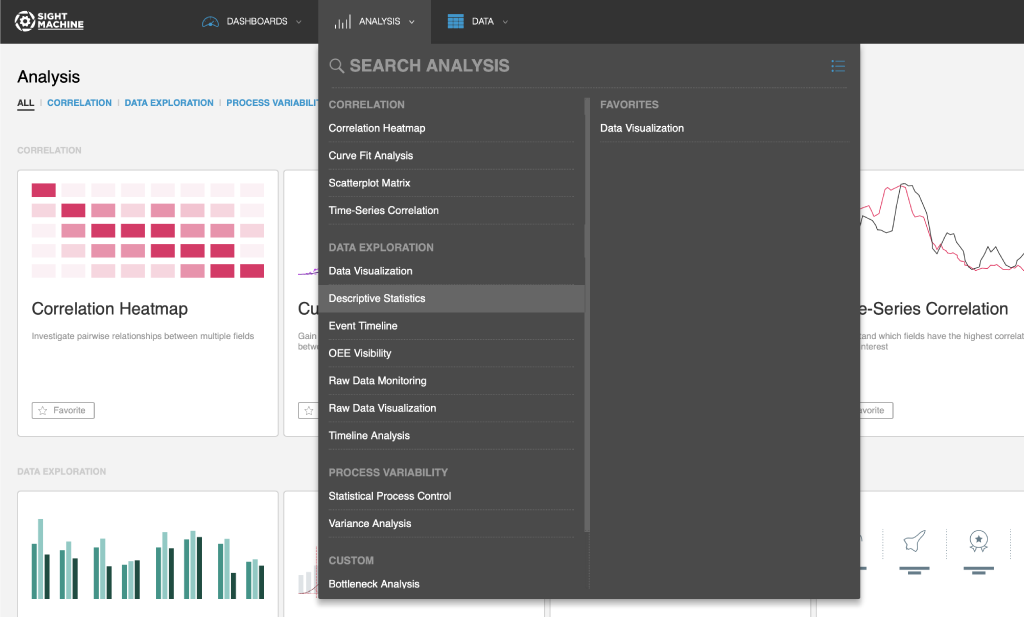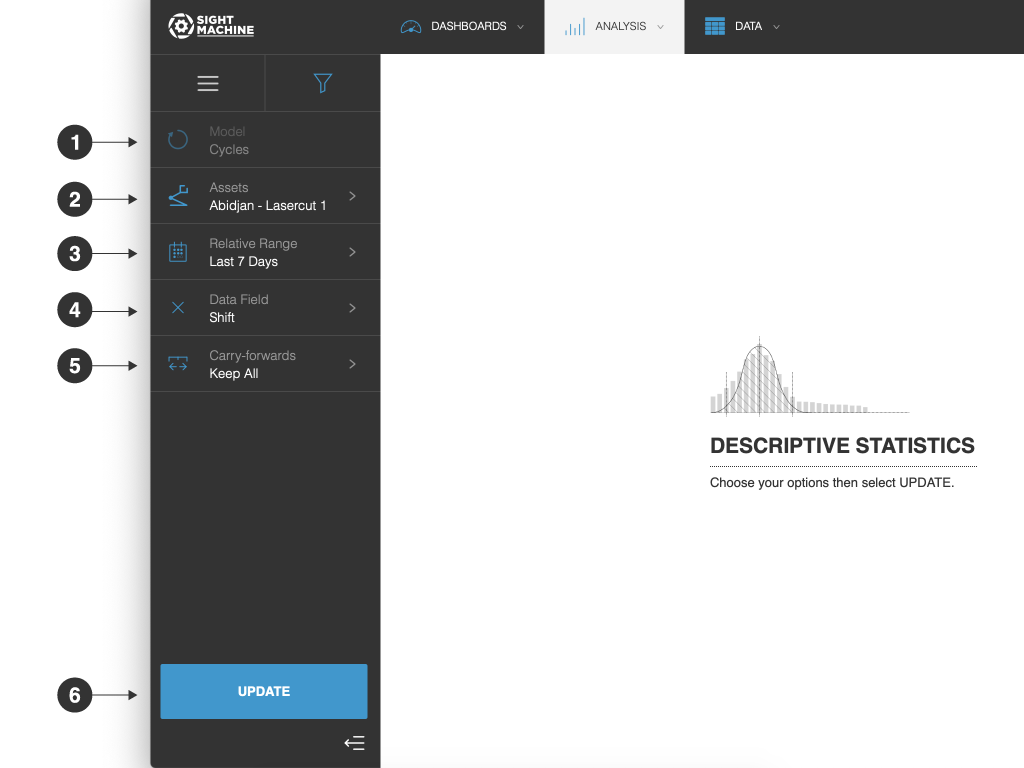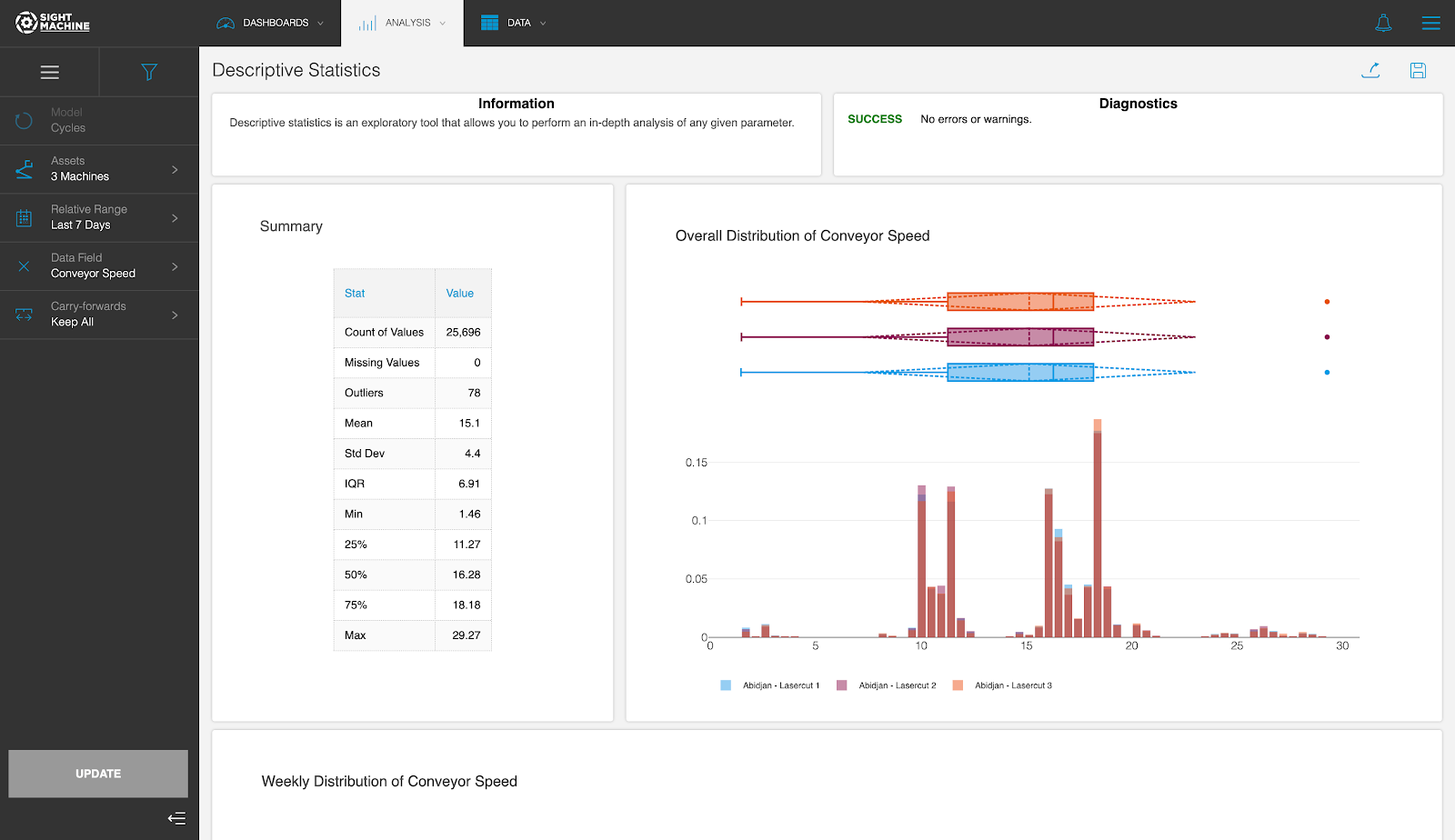- Print
- DarkLight
Descriptive Statistics
- Print
- DarkLight
Descriptive Statistics
Use Cases
Descriptive Statistics is a tool that provides a detailed look at the behavior of a particular parameter overall and over time. This tool is most helpful later in the exploratory process, after you have identified a parameter to analyze in detail. This is a good tool to follow Variance Analysis or the Event Timeline.
Specifications
Descriptive Statistics is a univariate analysis that you can perform on continuous and categorical fields on the Cycle model. You can select multiple machines of a given type. This analysis does not support the Part model because, when analyzing a single field, the extra context provided by the Part model is not required, and the Cycle model has higher granularity.
Analysis
Descriptive Statistics is an exploratory tool that computes metrics about a particular parameter to analyze its behavior overall and over time. For continuous fields, the tool plots a histogram of the parameter and computes a table of summary statistics that includes Count, Standard Deviation, Minimum, and Maximum. For categorical fields, the tool computes the count and distribution of each category value. The tool also plots the parameter’s distribution by week, which can highlight drift over time, and the number of records from each day, which can highlight missing data.
How to Use Descriptive Statistics
The Descriptive Statistics tool allows you to perform an in-depth analysis of one single parameter.
NOTE: This tool works on both numeric and categorical fields.
This tool is built on a Cycles model so it ignores variability that happens outside the cycle (non-production data), which could interfere with the analysis vs. traditional variance analysis done via spreadsheets. The Cycles model summarizes parameter readings for each cycle, eliminating noise from higher granularity readings that may be too detailed for an exploratory analysis. Raw data can be analyzed if needed using the Raw Data Visualization tools. For more information, see Generating a Raw Data Visualization.
To use Descriptive Statistics:
- On the Analysis tab, under Data Exploration, click Descriptive Statistics.

- On the main Descriptive Statistics screen, select your options on the left. For more details about each option, see Descriptive Statistics Options.
- Click Update.
Descriptive Statistics Options

The Descriptive Statistics options include:
- Model: You can analyze only cycles for a specific asset (AKA, machine). You cannot change this option.
- Assets: You can select one or more assets of the same type to analyze.
- Relative Range: You can define a date range of data points to analyze for the assets you have selected. For example, select the last 7 days. This option establishes the boundaries for the near real-time data that will be part of your analysis. Select from relative or absolute timeframes.
- Data Field: You can select the parameter that you want to investigate.
- Carry-forwards: You can undo the forward-fill effect on any fields. Select from Keep All, First, or Last. For more information, see the table in Options Common to All Analysis Tools.
- Update: Click this button to generate your chart.

Tool Output
The Descriptive Statistics tool displays a histogram for the selected parameter to visualize the overall distribution of its values, and a box plot to visualize the overall distribution, quartiles, and the standard deviation.
Underneath, there are box plots for the selected parameter broken down by week to illustrate potential drift over time, as well as a visualization of the records captured per day. This allows you to discover anomalies in the frequency of data capture.

